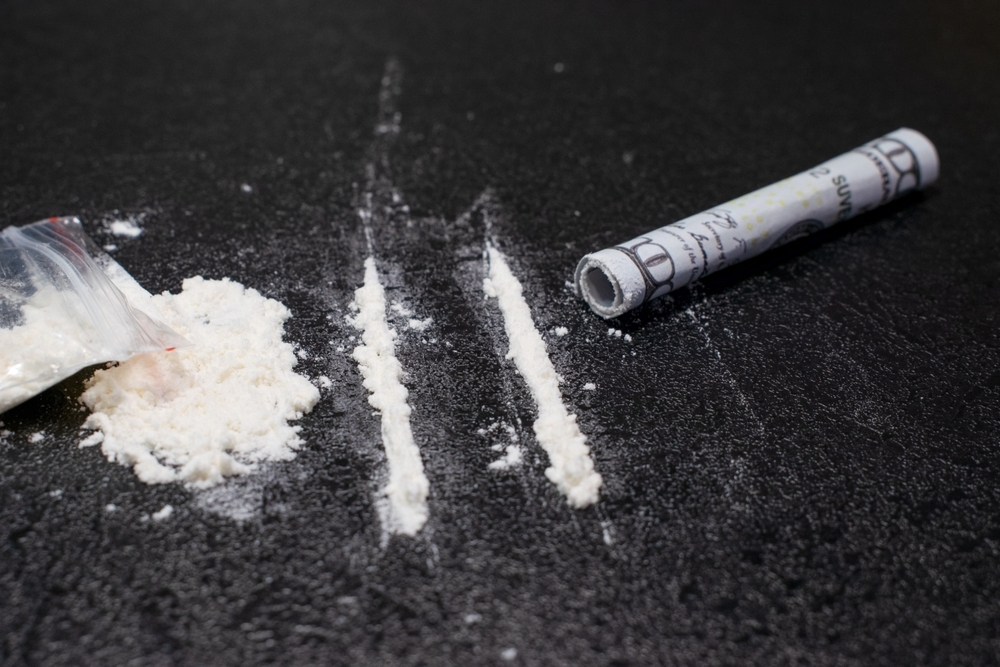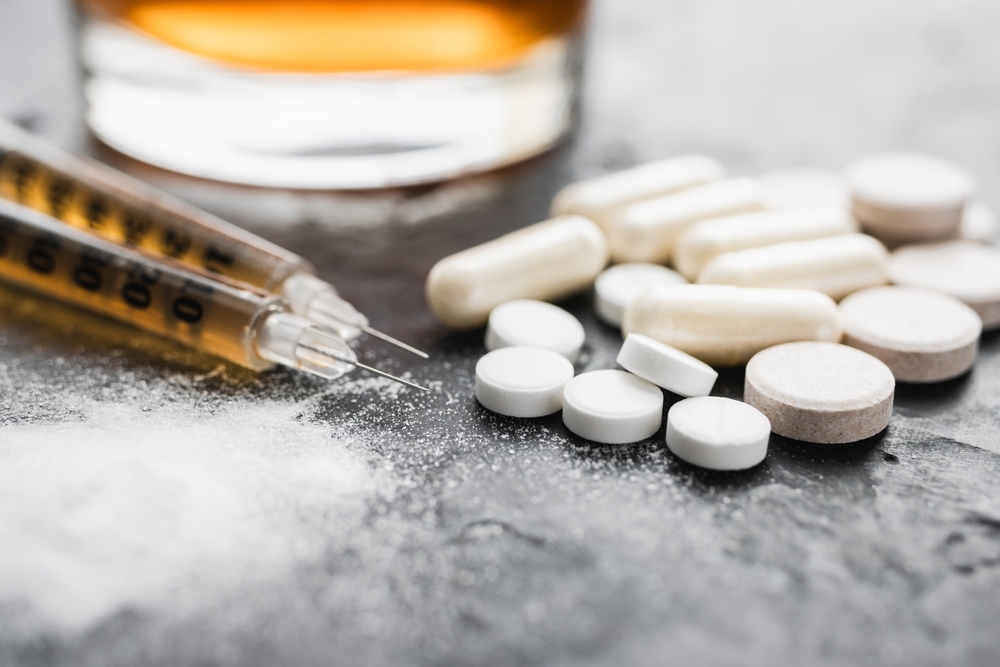Last Updated:
April 11th, 2025
Heroin overdoses are a significant public health concern in the UK. The Office For National Statistics registered 2,551 deaths in England and Wales in 2023 from opiates like heroin. It is tragic to consider how many of these lives might have been saved with the right response to an opioid overdose.
We look at the essential steps to take in response to a suspected overdose, followed by an explanation of how heroin overdoses happen. By understanding what to do in a crisis, you can be prepared to take action when it matters most.
Immediate steps to take to help someone in a heroin overdose
A heroin overdose can become fatal if not treated immediately. Every second counts, so if you suspect someone is overdosing, act fast and follow these steps:
Step 1: Call emergency services immediately
The first step to take if you think someone is having a heroin overdose is to contact emergency services. Dial 999 to get through to emergency responders. Stay on the line with them, remain calm and follow their instructions. Even if the person you’re helping wakes up or consciousness returns, they may still need medical help.
Step 2: Check for signs of an overdose
You already suspect the person is facing an overdose, so you may want to check for critical warning signs after or during your call with a medical response team. Warning signs to look for include:
- Unconsciousness or extreme drowsiness (they won’t wake up or are completely unresponsive)
- Slowed, shallow or halted breathing (check to see the regularity of their breathing, it may be limited or completely stopped)
- A blue tint to lips, ends of fingers or skin (cyanosis) (this shows signs of oxygen deprivation in the body)
- Pinpoint pupils (myosis) (you may see their pupils have shrunk and are unresponsive to movement or light)
- Gurgling, choking or snore-like sounds (this might show their airways are blocked or their tongue has rolled back)
Step 3: Support their breathing
Supporting them if their breathing has slowed or stopped can be lifesaving on its own. Cardiopulmonary resuscitation (CPR) or “Rescue breathing” involves the following steps:
- Make sure the airway is clear (nothing inside the mouth or blocking the airway)
- One hand on the person’s chin, tilt the head back and pinch the nose so it’s closed.
- Place your mouth over theirs to create a seal and give two slow breaths
- Check that their chest rises
- Follow up with another breath every 5 seconds
If you’re trained in CPR and the person has no pulse, then chest compression may be necessary to help keep blood flowing to vital organs. These steps are:
- Place your shoulders directly above your hands
- Using your upper body weight, push straight down on the chest about 2 inches (5 cm)
- Push hard and fast for 100 to 120 compressions a minute
Step 4: Get them into the recovery position
If the person is breathing but unresponsive, put them into the recovery position. This is used if a person has become unconscious, is vomiting, or is in danger of choking on vomit or saliva. To get them into this position:
- Turn them onto either side to prevent choking risk
- Bend their top leg at the knee to help them remain stable
- Tilt their head back slightly to keep the airway clear
This is the safest position to keep them in until medical help arrives.
Step 5: Stay with them and prepare
It is critical to remain with the person as much as possible until you get help. You need to be there to act quickly if breathing stops. Keep them warm if their temperature is low. If they return to consciousness, comfort them and try to encourage their cooperation with the ambulance crew. They will likely still be heavily intoxicated, so you can help by giving information like their age, how much heroin they took, if known and when they took it.
DO’s and DON’Ts when responding to a heroin overdose
A heroin overdose can become a matter of life or death. Make sure you know the DO’s and DON’Ts when responding to such a critical situation:
DO
- Contact medical services immediately
- Use CPR rescue-breathing or chest compression if you are trained and able to do so
- Stay with the person as much as you can incase breathing stops and keep them warm
- Put the person into the recovery position if you need to leave them for any reason
DON’T
- Use “old school” outdated methods you might have seen or heard about in fiction, such as putting them into an ice bath or getting physical (such as slapping, kicking or hitting them to try and wake them)
- Try to induce vomiting or use any other drugs to try and help
- Get them to walk it off if they’re conscious. They need to remain in a stable position
- Overthink the repercussions of “getting into trouble.” A life is at stake, so this needs to take precedence
What happens in the body during an overdose?
Heroin is a highly addictive and potent opioid. It is derived from the seed pods of opium poppy plants to make morphine, which is then acetylated to produce heroin.
Heroin effects are incredibly damaging. If a person overloads the body with such a heavy opioid, every part of the body can be affected, including:
- Blood: Blood flow is impaired during an overdose as veins in the body can collapse. This suppresses normal blood flow to every part of the body.
- Brain: During an opioid overdose, the brain can become oxygen-deprived, which can cause permanent brain damage after only four minutes. Seizures can occur and the brain damage caused can leave people paralysed.
- Heart: Opioids in large amounts interfere with receptors between the brain and heart, causing heart rate to slow or even stop. Abnormal heart rhythms start, which, in some cases, may cause complete cardiac arrest.
- Lungs: Respiratory depression can happen in your lungs if you overdose, with the fatal risk of slowing or completely stopping breathing. An overdose may even cause pulmonary oedema, in which a fluid leak fills up the air space in your lungs.
The myriad effects on your body are staggering and escalate quickly. Recognising and acting quickly is critical if you think someone is going through an opioid overdose.
The role of Naloxone in overdose prevention
In many parts of the world, Naloxone is used to reverse opioid overdose. More specifically, in the UK, charities such as StopTheDeaths and movements from the UK government have expanded access to naloxone kits.
Naloxone is not a long-term solution for people with an opioid use disorder, but its availability has been a key focus to help reduce opioid-related deaths. Learning more about Naloxone and where you can access a kit may be an important step to take if you or a loved one are concerned about heroin addiction and the potential of overdose.
I need help with a heroin addiction
Recognising a heroin overdose is a matter of medical emergency. If you or a loved one are struggling and need heroin addiction treatment before things get worse, we want to let you know that we’re here for you.
At UKAT, we specialise in complete medical detox programmes that help you withdraw safely, followed by heroin rehab treatment for the physical and psychological symptoms. With our professional support, evidence-based therapies and a structured recovery plan, you don’t have to go through this alone.
Recovery is possible, and the first step starts by contacting us today. Reach out to us now to begin your journey toward a healthier life, free from addiction.
(Click here to see works cited)
- Population Health Monitoring. “Deaths Related to Drug Poisoning in England and Wales: 2023 Registrations.” Deaths Related to Drug Poisoning in England and Wales – Office for National Statistics, Office for National Statistics, 22 Oct. 2024, www.ons.gov.uk/peoplepopulationandcommunity/birthsdeathsandmarriages/deaths/bulletins/deathsrelatedtodrugpoisoninginenglandandwales/2023registrations
- Goyal A, Sciammarella JC, Cusick AS, et al. Cardiopulmonary Resuscitation. [Updated 2023 May 29]. In: StatPearls [Internet]. Treasure Island (FL): StatPearls Publishing; 2025 Jan-. Available from: https://www.ncbi.nlm.nih.gov/books/NBK470402/
- Douma MJ, Handley AJ, MacKenzie E, Raitt J, Orkin A, Berry D, Bendall J, O’Dochartaigh D, Picard C, Carlson JN, Djärv T, Zideman DA, Singletary EM. The recovery position for maintenance of adequate ventilation and the prevention of cardiac arrest: A systematic review. Resusc Plus. 2022 Apr 29;10:100236. doi: 10.1016/j.resplu.2022.100236. PMID: 35515010; PMCID: PMC9065878.
- A Complicated Opioid Overdose: A Simulation for Emergency Medicine Residents | Mededportal, www.mededportal.org/doi/10.15766/mep_2374-8265.10616
- NIDA. 2022, January 11. Naloxone DrugFacts. Retrieved from https://nida.nih.gov/publications/drugfacts/naloxone on 2025, February 23
- “Naloxone Explained.” Stop The Deaths, www.stopthedeaths.com/naloxone
- “Expanding Access to Naloxone.” GOV.UK, www.gov.uk/government/consultations/consultation-on-expanding-access-to-naloxone/consultation-on-expanding-access-to-naloxone




